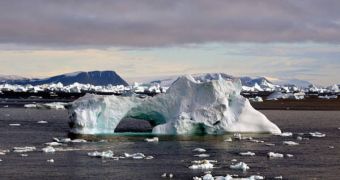For quite some time now, climatologists have known that the layers found in most ancient ice shelves and in large icebergs can be used to get a glimpse into our planet's ancient history, at least as far as climate changes go. Each layer is specific to a certain period of time in our planet's past, and each of the event horizons between them mark a sudden change and is most likely the event of a sudden change in the status-quo of the moment.
Currently, experts from several universities are embarking on an expedition whose primary objective is to analyze dust formations trapped in the ancient ices and to assess what climate influences they have been subjected to. The results of these studies could potentially shed some light on several of our history's “blanks,” periods of time for which not too many data could be found through conventional means.
The team, comprising experts from the Universities of Edinburgh, Stirling and Lille, will analyze glaciers in the Antarctic for a very specific reason. Over more than 80,000 years, powerful winds blowing on the plains of Patagonia, in the southern tip of South America, have carried large amounts of dust to the glaciers of its frost neighbor. By analyzing how this dust has deposited and when, experts hope to get a view of how wind and glacier patterns looked like thousands of years ago.
“Ice cores from the Antarctic ice sheet act as a record of global environment. However, the dust levels showed some sudden changes which had us puzzled – until we realized that the Patagonian glaciers were acting as an on/off switch for releasing dust into the atmosphere,” University of Edinburgh researcher professor David Sugden explains. Details of the find are available in the latest issue of the scientific journal Nature Geoscience.
In previous experiments, experts have determined that the periods of time featuring the most intense “dust storms” in Antarctica coincide with the coldest ones as well. In those times, Patagonian glaciers released their waters on the windy planes of the region, from where the strong air currents carried the small particles to the Southern Continent.

 14 DAY TRIAL //
14 DAY TRIAL //